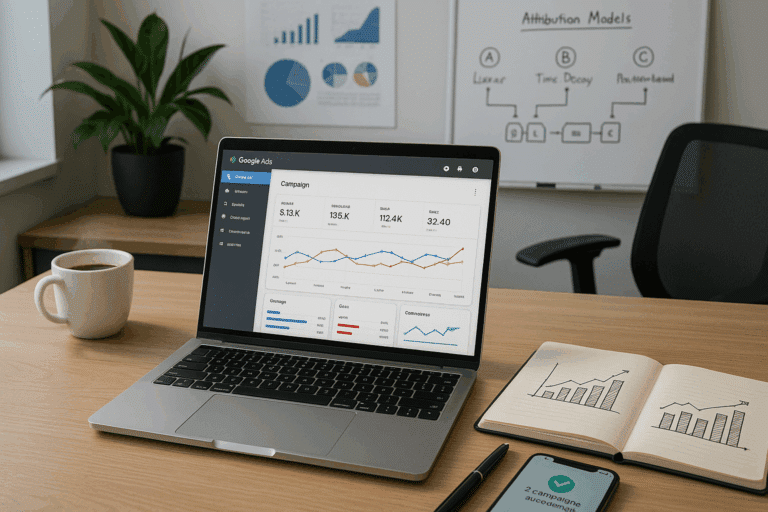In the realm of Customer Relationship Management (CRM), this couldn’t be more accurate. A steady stream of valuable data flows through your CRM system every day, and harnessing its potential could be the key to skyrocketing your marketing ROI. But how can you refine this raw data into a power source for your marketing strategies? The answer lies in increasing your attribution accuracy.
When it comes to marketing, accuracy is everything. You need to know what’s working, what’s not, and where your investment is generating the highest returns. These are not easy tasks. A lack of visibility into your marketing performance can lead to misallocated resources, poor decision making, and ultimately, a lower ROI. But this is where the power of CRM data comes in. 🚀
CRM data offers a wealth of insights about your customers: their behavior, preferences, and interactions with your brand. This information can be instrumental in shaping and refining your marketing strategies. But to unlock its full potential, you need to boost your attribution accuracy. This involves pinpointing exactly which marketing touchpoints are driving conversions and sales, and allocating your budget accordingly.
Get Ready for a Deep Dive into CRM Data and Attribution Accuracy
In this comprehensive guide, we will delve into the nuts and bolts of CRM data and its impact on attribution accuracy. Our journey will take us from the fundamental concepts of CRM and data attribution to the latest techniques and tools you can use to maximize your marketing ROI.
We’ll start by exploring what CRM data is and why it’s such a valuable asset for marketers. Then, we’ll tackle the challenging subject of attribution accuracy, explaining what it is, why it matters, and how it can boost your marketing ROI. Along the way, we’ll share real-world examples, best practices, and actionable tips you can start implementing right away. 🛠️
Unlocking the Power of CRM Data: Not Just a Buzzword
As we venture further, we’ll dispel the myth that harnessing the power of CRM data is just a buzzword. We’ll demonstrate how, when used effectively, CRM data can have a transformative impact on your marketing efforts. We’ll also shed light on common pitfalls and challenges, providing you with a roadmap to overcome them.
From there, we’ll dive into more complex issues like data integration and advanced analytics. We’ll discuss how integrating CRM data with other data sources can create a more comprehensive view of your customer journey, and how advanced analytics can uncover hidden trends and patterns in your data.
CRM Data: The Key to Maximizing Your Marketing ROI
Finally, we’ll explore how you can leverage CRM data to maximize your marketing ROI. This will involve digging into key metrics, setting up attribution models, and making data-driven decisions to optimize your marketing efforts. By the end of this guide, you’ll have a solid understanding of how to unlock the power of your CRM data and boost your attribution accuracy for maximum marketing ROI.
So, if you’re ready to turn your CRM data into a strategic asset, let’s dive in. 🔑
The journey to unlocking the power of CRM data may be complex, but the rewards are worth it. Get ready for a deep dive into the world of CRM data and attribution accuracy, and prepare to discover how these powerful tools can transform your marketing strategy and boost your ROI.
Understanding the Powerhouse: CRM Data
When it comes to data-driven marketing, Customer Relationship Management (CRM) data is a treasure trove of insights that can fuel your marketing campaigns. Having a clear understanding of CRM data is crucial to leveraging its full potential for driving high-quality interactions with your customers. The video, “What is CRM? | by Salesforce” on the Salesforce YouTube channel, provides a comprehensive understanding of CRM and how businesses can harness it for growth.
CRM data refers to all the information that your CRM system collects about your customers. It includes basic details such as names and contact information, and extends to interactions with your business, buying patterns, feedback, preferences, and more. This wealth of data allows businesses to build detailed customer profiles, understand their needs, preferences, and behaviors, and tailor marketing efforts accordingly.
Unlocking the power of CRM data is not just about having access to it, but knowing how to analyze and apply it in your marketing strategies. This is where the concept of attribution comes in. Attribution is the process of identifying which marketing touchpoints a customer encountered on their journey to making a purchase. Understanding attribution is key to optimizing your marketing ROI.
Boosting Attribution Accuracy with CRM Data
Attribution models, when fed with accurate and rich CRM data, can provide a comprehensive view of the customer journey. They allow businesses to understand which marketing touchpoints are working and which ones need improvement, enabling them to optimize their marketing spend for maximum ROI. The YouTube video, “Attribution Modeling: An Introduction | by Google Analytics” on the Google Analytics YouTube channel, provides an excellent introduction to attribution modeling.
While there are various attribution models available, such as the last click, first click, linear, and time decay models, none of these can provide 100% accuracy. However, the accuracy of these models can be significantly improved with the integration of rich CRM data. By adding layers of customer information and interactions from your CRM to your attribution model, you can achieve a more holistic and accurate view of the customer journey.
For example, a customer may have first interacted with your brand through a Facebook ad (first click), then visited your website through a Google search (last click), and finally made a purchase after receiving a personalized email (direct conversion). By integrating CRM data, you can understand the customer’s journey beyond just the first and last click, and realize the impact of personalized email in driving the final conversion.
CRM Data and Attribution: A Comparative View
| Without CRM Data | With CRM Data |
|---|---|
| Limited view of the customer journey | Comprehensive view of the customer journey |
| Marketing decisions based on incomplete data | Marketing decisions based on rich, accurate data |
| Less accurate attribution models | Improved accuracy of attribution models |
| Potential wastage of marketing spend | Optimized marketing spend for maximum ROI |
As you can see from the table above, integrating CRM data can significantly enhance your marketing efforts, leading to improved attribution accuracy and higher marketing ROI.
Steps to Unlocking the Power of CRM Data for Marketing Attribution
- Integrate CRM and marketing data: The first step is to integrate your CRM and marketing data to have a unified view of the customer journey. This would require a solid CRM system that can seamlessly integrate with your marketing platforms.
- Analyze the data: Once the data is integrated, the next step is to analyze it to identify patterns, trends, and insights. This can help you understand which marketing touchpoints are most effective in driving conversions.
- Apply the insights: The final step is to apply the insights gained from the analysis to your marketing strategies. This could mean optimizing your ad spend, personalizing your marketing messages, or tweaking your marketing mix for better results.
Remember, the goal is not just to gather data, but to use it to make informed decisions that enhance your marketing ROI. So, get started with unlocking the power of your CRM data today!
Maximizing Your Marketing ROI with CRM Data
Unlocking the power of CRM data for marketing attribution is an ongoing process that requires a commitment to data integration, analysis, and application. However, the benefits it brings in terms of improved marketing effectiveness and ROI make it well worth the effort.
The key to maximizing your marketing ROI with CRM data lies in its proper utilization. This involves understanding the data, analyzing it for insights, applying these insights in your marketing strategies, and continuously monitoring and optimizing your efforts based on the data.
With the power of CRM data, you can move beyond just tracking clicks and conversions to truly understanding your customers and their journeys. This deeper understanding can help you deliver more personalized and effective marketing campaigns, resulting in improved customer relationships, higher conversion rates, and ultimately, a better marketing ROI.

Conclusion
In conclusion, we have traversed a plethora of technical concepts and methodologies in this article. Let us take a moment to recap and reinforce the fundamental points we have covered.
We began by delving into the intricacies of Software Engineering, highlighting its core principles and emphasizing its importance in our increasingly digital world. We explored the essentiality of writing high-quality, maintainable code and examined how the application of software design patterns and principles such as SOLID and DRY can profoundly impact the efficiency and scalability of a software system.
In our discussion of Information Technology (IT), we navigated through its vast landscape, exploring topics such as computer systems, networks, cybersecurity, and database management. We underscored the role of IT in various industries and how it revolutionizes business operations, aiding in decision-making, enhancing efficiency, and promoting growth.
💻 We also elucidated the role of a technical writer in this context. We demonstrated how their ability to articulate complex technical concepts in a comprehensible manner is invaluable in bridging the gap between technical experts and non-experts, fostering a better understanding and application of technology.
As we journeyed further, we tackled the subject of Artificial Intelligence, explicating its foundation, principles, and real-world applications. We emphasized its transformative potential and how it is poised to revolutionize myriad sectors, from healthcare to finance and beyond. 🤖
In our exploration of big data, we highlighted the importance of proper data management, the utilization of data analytics, and the power that this knowledge can confer upon businesses and organizations. 📊
🔗 We have presented numerous resources throughout this article. I urge you to revisit these links, immerse yourself in further research, and deepen your understanding of these essential technical domains. Knowledge is, after all, a never-ending quest.
I hope that this article has provided you with valuable insights and sparked your interest in the ever-evolving fields of IT and Software Engineering. This knowledge isn’t just for specialists, but for anyone curious about how our digital world functions and how to harness its power. I encourage you to share this article with your peers, ignite meaningful discussions, and apply your newfound understanding to your professional or personal life.
The realms of IT and Software Engineering are dynamic and multifaceted, constantly evolving and expanding. Staying informed and adaptable is paramount. As Isaac Newton once said, “What we know is a drop, what we don’t know is an ocean.” 🌊
I would be delighted to hear your thoughts, questions, or insights on this topic. Please feel free to leave a comment below or reach out via [contact form](#). Your engagement will undoubtedly enrich our collective learning experience.
Remember, “The future belongs to those who believe in the beauty of their dreams.” 💫 So dream big, stay curious, and keep learning.
Thank you for investing your time in reading this article. Keep exploring, keep questioning, and most importantly, keep growing. Happy learning! 🚀
References:
- [Software Engineering – Wikipedia](https://en.wikipedia.org/wiki/Software_engineering)
- [Information Technology – Techopedia](https://www.techopedia.com/definition/24152/information-technology-it)
- [Artificial Intelligence – IBM](https://www.ibm.com/cloud/learn/what-is-artificial-intelligence)
- [Big Data – Oracle](https://www.oracle.com/big-data/what-is-big-data.html)



